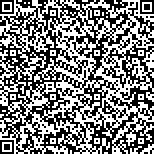下载中心
优秀审稿专家
优秀论文
相关链接
摘要

陆表覆盖变化影响地表特征从而改变地表能量平衡是理解人类活动对全球气候变化影响的关键环节。选择国际气候谈判主要国家的美国、印度和巴西作为中国的对比国,对比分析不同国别、不同气候带典型陆表覆盖类型的地表反照率时空差异,进而模拟开垦和城市化等陆表覆盖变化对反照率的影响差异。结果表明:(1) 2000年—2015年,中国、美国的地表反照率年际变化存在明显的气候带空间分异特征,中国干旱半干旱区和美国中低纬湿润区表现出降低趋势,而中国亚热带湿润和美国高纬与中部干旱区则表现出明显的升高趋势,印度的地表反照率年际变化呈微弱下降趋势,而巴西为微弱上升趋势。(2)无雪覆盖时,耕地、林地、草地和人造地表反照率具有夏高、冬低的时间变化特征,干旱半干旱区反照率明显高于湿润区。4种类型的国别差异体现在,中国亚热带湿润区地表反照率均以上升为主,干旱半干旱区则相反;美国除耕地在干旱区呈较强的升高趋势外,其余类型基本为降低趋势;印度均表现为降低趋势;巴西则表现为略微升高趋势。(3)与无雪覆盖相比,有雪覆盖时不同陆表覆盖类型地表反照率均有所提高,林地提高幅度最小,约0.06—0.26,耕地提高最大,约为0.17—0.38,且中国林地反照率提高幅度略高于美国。(4)原陆表覆盖为林地时,开垦和城镇化均导致地表反照率升高,且干旱区升高幅度高于湿润区,湿润区的升高幅度随纬度降低而减弱;为草地时,开垦主要在巴西、印度和中、美亚热带湿润区引起地表反照率升高。而城镇化引起的反照率变化则受到原有地表覆盖、季节和气候背景影响存在较复杂的国别和气候带差异。
With the deepening research of global change, it is increasingly recognized that at the regional scale, changes in land use/land cover caused by human activities such as deforestation, urban expansion, and farmland reclamation affected the land surface characteristics and thus play a dominant factor in land surface radiative budget and energy balance, which is a key link in understanding the impact of human activities on global climate change. Based on the 30 m Globe Land 30 dataset and 1000 m MODIS albedo products, this study quantitatively analyzed the spatial variations of surface albedo at interannual and seasonal scales, and compared its characteristics between farmland, forest, grassland and artificial surfaces in different climate zones among China, the United States, India, and Brazil. Then the changes in albedo due to reclamation and urbanization were further simulated. Results show that (1) the interannual surface albedo from 2000 to 2015 showed a slight decline in India and a weak increase in Brazil, which had a obvious spatial heterogeneity in China and the United States. The arid and semi-arid zones in China and humid zones in middle and low latitudes of the United States showed decline trends, however the humid subtropical zones in China and the microthermal as well as the arid zones in the United States were opposite. (2) Under the snow-free condition, the interannual surface albedo of the farmland, forest, grassland and artificial surfaces have country differences. The surface albedo of the four types were high in summer and low in winter, and were obviously higher in arid and semi-arid zones than in humid zones. The albedo of humid subtropical zones in China has increased which is contrary to the arid and semiarid zones. Except for the farmland in arid zones in the United States that showed a relatively strong interannual trend, others generally declined. All types have decreased in India, however raised in Brazil. (3) Compared to the snow-free condition, when under the snow condition, the surface albedo of the four land cover types have raised. The albedo changes in forest are 0.06 to 0.26, which is the smallest, and 0.17 to 0.38 in cultivated land, which is the highest. And the albedo changes of forest in China is higher than that in the United States. (4) Reclamation and urbanization on forest will increase the albedo in all months, which will be more aggravated in arid zones than in humid zones. Reclamation on grassland will increase the albedo in India, Brazil, humid subtropical zones in China, and the United States. But the changes due to urbanization further demonstrate the variations between countries and zones that impacted by the original land cover types, seasons and background climate. Therefore, even under the same climatic background, the variation of surface albedo has different directions and magnitudes in different countries. The spatial heterogeneity of albedo changes can reflect the differences in natural geographic background and can also reflect the differentiation in human disturbances such as different land use patterns and eco-environment policies which may helps the further analysis and understanding of the driving mechanism of the impacts on land surface characteristics caused by land use/land cover changes.

